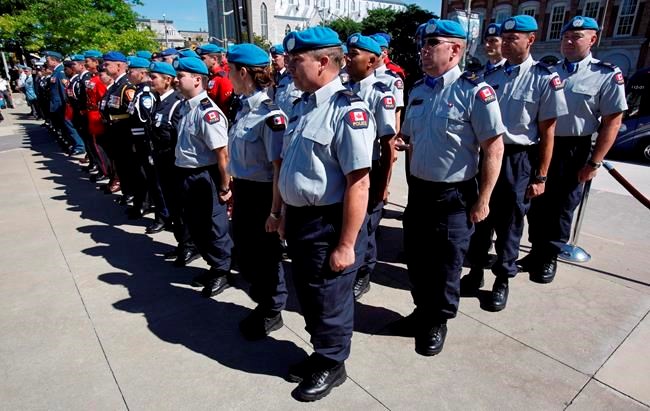Paul Paone was bummed.
The 19-year-old army reservist from Victoria had wanted to hop a plane for Beirut and its wondrous Kit Kat Club, but couldn’t get leave.
So, here he was, stuck at the Ismailia air base in Egypt, helping load a handful of his fellow Canadian soldiers onto the Buffalo aircraft bound for Lebanon and Damascus, Syria. It was a regular supply run for Canadian peacekeepers in the Golan Heights. When it climbed into the sunshine that morning, Paone couldn’t help feeling a twinge of envy.
That emotion changed later that day when the news broke: Syrian missiles had blown the unarmed Canadian transport plane out of the sky. All nine on board were dead. It was Aug. 9, 1974, and Canada’s military had just suffered its worst peacetime loss in history.
Monday is National Peacekeepers Day. The date was chosen because of those deaths in Syria. On Vancouver Island, the occasion will be marked with 7 p.m. services at the Chemainus and Esquimalt cenotaphs.
The occasion isn’t just in memory of the nine who died in the Buffalo, of course. It recognizes more than 125,000 Canadians who have served in dozens of United Nations missions since 1948, from Cyprus to Croatia to Rwanda to Haiti.
The term peacekeeping conjures up an image of Lester Pearson and blue helmets and the Canadian good guy bringing stability to the world. The reality can be more brutal: 130 Canadians have died on these missions. The Canadian War Museum website points out that in Rwanda and the former Yugoslavia in the 1990s, “service members were confronted with no peace to keep and bore witness to atrocity and suicide.”
It’s that Middle East mission in 1974 that Paone remembers, though. He was just a year removed from Saanich’s Mount View High School, away from home in what was meant to be a cool short-term job overseas. People weren’t supposed to die, certainly not people he knew.
It messed with Paone’s head. He went to the padre but the padre was busy dealing with the families of those who had died.
After that, Paone was shifted to the Golan Heights, where he soon found himself driving one of a dozen trucks sent into Syria to recover the wreckage of the Buffalo.
“I can see it in my mind right now,” he said. “It was in pieces. I mean, it was blown to smithereens.” He was so naïve that he didn’t recognize the brown substance that the ground wasps were going nuts over as it soaked into the soil.
After the Arab-Israeli War of 1973, peace was fragile. Had the Syrians mistaken the lumbering Buffalo for an Israeli warplane? Or was the attack deliberate, politically motivated? Investigators could never say for sure.
Paone went on to a long career in the military. He was a 59-year-old lieutenant-colonel when the Maple Leaf flag was lowered in Kabul for the last time in March 2014, ending Canada’s 12-year mission in Afghanistan. That loss of the Buffalo always stuck with him, though. At a Christmas party in 1982, a woman approached him: “You were the last one to see my husband alive.” The man had been the plane’s loadmaster.
Paone wasn’t the only Victorian at Ismailia when the plane was shot down.
In fact, the first person at the base to hear of the tragedy was Chris Preston, then a naval reservist two months into a six-month deployment to the Middle East. He was on duty in the message centre when an Austrian officer called from UN headquarters to say the Buffalo had been shot down.
The news knocked Preston back. He was 20 years old. It was his first time abroad.
“All of a sudden what had started off as an interesting opportunity to see the world and do something to help, got serious,” he said.
Paone echoes that. “We were just a couple of kids on an adventure, and got a dose of reality, really quick.”
It still bothers both men that Syria never explained what happened. How did a clearly marked UN aircraft with clearance to follow an approved flight path end up targeted by three surface-to-air missiles?
“It doesn’t add up,” Preston said this week from the Ashton Armoury Museum on Vanalman, where he was preparing vintage vehicles for Monday’s National Peacekeepers Day.
There’ll be a parade down Esquimalt Road prior to the 7 p.m. ceremony at the cenotaph in Memorial Park. Military aircraft will fly overhead.
- - -
Comment on this article by sending a letter to the editor: [email protected]



